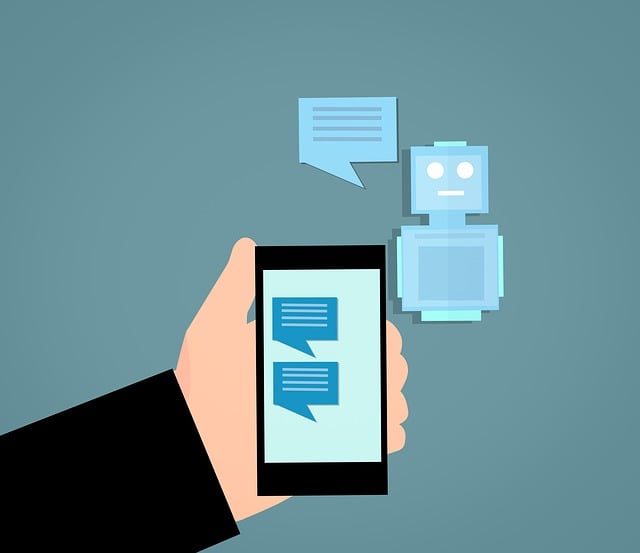AI chatbots, or ochatbots, are revolutionizing e-commerce by providing 24/7 personalized support, instantly answering queries, and facilitating checkouts. They enhance customer experience, drive sales, and free up human agents for complex issues through NLP and machine learning algorithms. Platforms like Dialogflow, Watson Assistant, and Power Virtual Agents integrate ochatbots into e-commerce platforms, improving response accuracy and saving time. Measuring performance with metrics like satisfaction, response time, and conversion rates ensures continuous optimization and a positive brand image.
In today’s digital landscape, e-commerce AI chatbots are transforming customer interactions. These intelligent assistants enhance user experiences, offer 24/7 support, and drive sales through personalized recommendations. This article explores the pivotal role of AI chatbots in e-commerce, delving into key features, benefits, and popular platforms like Dialogflow and IBM Watson. We’ll guide you through successful implementation strategies and provide insights on measuring performance to optimize user experiences with these game-changing ochatbots.
- Understanding the Role of AI Chatbots in E-commerce
- Key Features and Benefits of an Optimal E-commerce AI Chatbot
- Popular E-commerce AI Chatbot Platforms and Tools
- Implementing an AI Chatbot: Strategies for Success
- Measuring Performance and Enhancing User Experience
Understanding the Role of AI Chatbots in E-commerce

AI chatbots have emerged as a powerful tool in transforming the e-commerce landscape, revolutionizing how businesses interact with their customers. In today’s digital era, where customer expectations are higher than ever, AI-powered chatbots offer a competitive edge by providing instant and personalized support. These virtual assistants can handle a myriad of tasks, from answering product queries to guiding users through the checkout process, thus enhancing the overall shopping experience.
By implementing an e-commerce AI chatbot, businesses can reduce response times, improve customer satisfaction, and increase sales conversions. Chatbots can provide 24/7 availability, ensuring that shoppers receive immediate assistance regardless of their location or time zone. They can also learn from each interaction, constantly evolving to deliver more accurate and relevant information, creating a dynamic and engaging shopping journey.
Key Features and Benefits of an Optimal E-commerce AI Chatbot

An optimal e-commerce AI chatbot brings a multitude of benefits to both businesses and customers. Key features include intuitive natural language processing (NLP), enabling seamless interaction through text or voice, 24/7 availability to answer queries, provide product recommendations, and facilitate sales. This enhances customer experience by saving time and offering personalized assistance.
Additionally, these chatbots leverage machine learning algorithms to gather and analyze customer data, understanding preferences and behaviors. This allows for tailored marketing campaigns, improved inventory management, and increased conversion rates. They can also handle basic tasks like order tracking, return requests, and frequently asked questions efficiently, allowing human agents to focus on more complex issues.
Popular E-commerce AI Chatbot Platforms and Tools

In today’s digital era, e-commerce businesses are constantly seeking innovative ways to enhance customer experience and drive sales. One such game-changer is the integration of AI chatbots, which offer a plethora of benefits, from 24/7 availability to personalized product recommendations. Popular platforms like Dialogflow (by Google), IBM Watson Assistant, and Microsoft Power Virtual Agents stand out for their robust features and ease of use. These tools empower merchants to create intelligent chatbots that can handle customer inquiries, provide product information, and even facilitate the checkout process, thereby increasing efficiency and customer satisfaction.
OC chatbot technologies are revolutionizing e-commerce interactions by offering dynamic and context-aware conversations. Tools such as LiveChat, Zendesk, and Intercom have embraced AI integration, allowing businesses to automate simple tasks and focus on more complex customer needs. By leveraging machine learning algorithms, these platforms continuously learn from user interactions, improving response accuracy over time. This not only saves time for both customers and support staff but also ensures a seamless and engaging shopping journey.
Implementing an AI Chatbot: Strategies for Success

Implementing an AI chatbot into your e-commerce platform can significantly enhance customer experience and drive sales, but success requires careful strategy. Firstly, define clear goals for your oChatbot, such as providing 24/7 support, answering product queries, or facilitating sales. This will guide the chatbot’s design and functionality. Next, integrate the chatbot seamlessly into your existing customer journey, ensuring it feels natural rather than intrusive. Utilise conversational AI to make interactions human-like, using natural language processing (NLP) to understand and respond to customer needs accurately.
Data privacy and security are paramount; ensure compliance with regulations like GDPR and CCPA. Regularly train and update the chatbot’s knowledge base based on customer interactions to improve its performance over time. Monitor user feedback and analyse chatbot performance metrics such as response accuracy, resolution rate, and customer satisfaction scores. This iterative approach will help fine-tune your oChatbot for maximum effectiveness in delivering a personalized, efficient, and secure shopping experience.
Measuring Performance and Enhancing User Experience

Measuring performance is a crucial aspect of any AI chatbot, including ecommerce chatbots. Key metrics to track include customer satisfaction scores, response time, accuracy rates, and conversion rates. By analyzing these data points, businesses can identify areas for improvement and ensure that the ochatbot delivers on its promise to enhance user experience. Well-designed chatbots should aim to provide instant, accurate, and helpful responses, guiding users through their purchasing journey seamlessly.
Moreover, continuous optimization is essential to keep up with evolving customer expectations and market trends. Regularly updating the chatbot’s knowledge base, refining its algorithms, and incorporating user feedback can significantly improve its effectiveness. A top-performing ecommerce AI chatbot not only facilitates sales but also creates a positive brand image by offering efficient, personalized, and engaging interactions at every touchpoint.
An e-commerce AI chatbot, or oChatbot, is a powerful tool that can transform online shopping experiences. By understanding customer needs, providing instant support, and offering personalized product recommendations, these chatbots enhance user engagement and satisfaction. With the right features and implementation strategies, an optimal oChatbot can drive sales, reduce cart abandonment rates, and foster stronger customer relationships. As e-commerce continues to evolve, leveraging AI technology will be key to staying competitive and delivering exceptional online retail experiences.
